Associate education minister David Seymour promises next year’s free school lunches, Ka Ora, Ka Ako, will be “the same quality or better” despite their slashed budget. InDepth reporter Mava Moayyed pays a visit to the factory preparing them.
Watch this story on our home for news, indepth and consumer stories TVNZ+.
In an unassuming building on the outskirts of Hamilton, Libelle factory staff are gearing up for their biggest challenge yet: preparing hundreds of thousands of meals to deliver across the country every day.
During our visit, job interviews were underway to fill 90 new positions at what will soon become the headquarters of the revamped Healthy School Lunches Programme, Ka Ora, Ka Ako.
This centralised approach is a significant shift from the current model, which relies on local caterers to supply lunches to the 1014 schools enrolled in the programme for a maximum of $8.62 per lunch. Now, a consortium led by multinational giant Compass Group is taking the reins, tasked with creating nutritious, tasty meals for kids at just $3 a head.
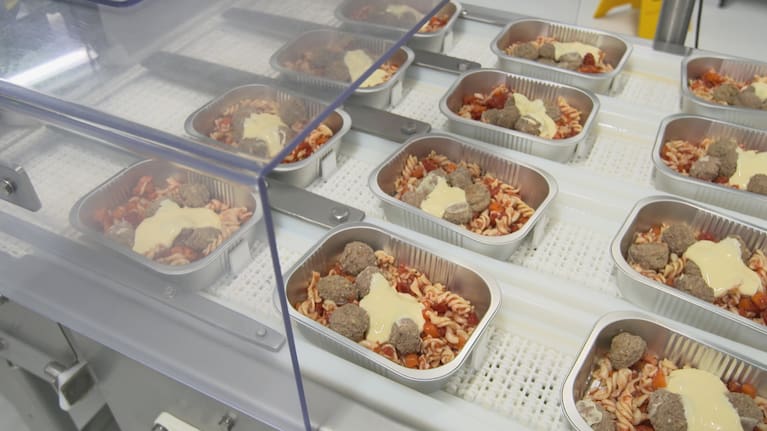
At the heart of the operation is the Libelle factory in Hamilton. Libelle, a New Zealand company and part of the consortium that won the Government contract, already produces about 10,000 meals daily for Ka Ora, Ka Ako.
However, they’ll need to scale up their output by an incredible 1660% to feed the 176,000 students set to switch to the new model starting in Term 1, 2025.
By 2026, when primary schools (Years 0–6) join the programme, that number will rise again to about 200,000 meals a day.
During our visit, we watched factory staff prepare meals such as beef rissoles and meatball pasta in massive quantities. Each portion was packed into an aluminum container and sealed for delivery.
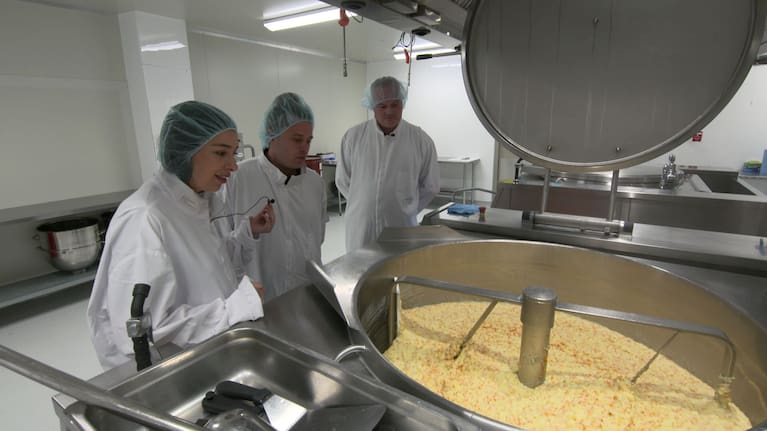
Starting next year, these meals will be transported nationwide to “satellite” kitchens, where they will be reheated and then delivered to schools.
Some logistical details are still being ironed out, such as whether all meat will be halal, how packaging will be recollected, and how utensils will be supplied. However, staff remain optimistic about the programme’s rollout.
But there are concerns from schools about the standard of the meals. Compass and Libelle have struggled with quality issues in the past and both were repeatedly placed under performance management plans after complaints from schools.
“Look, we’re ready for the kids to be the judges, right? And the one thing we know is that they have no middle terms, so the filters will be avoided, and we will be held accountable, and we’re ready to do that in partnership with the government,” says Juan Pons-Seres de Brauwer from Compass Group.
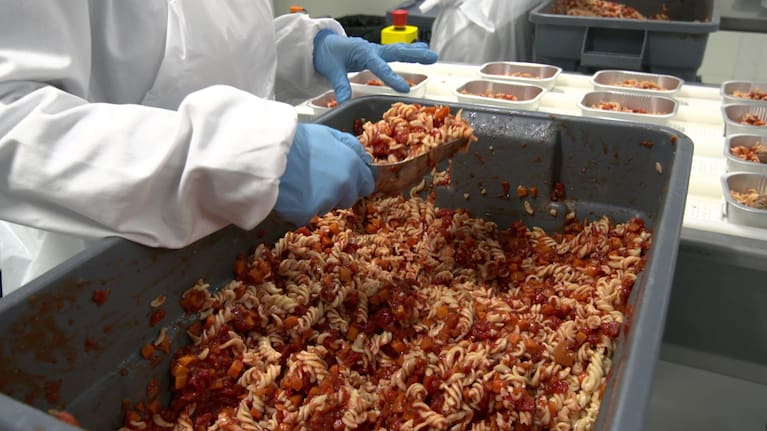
‘One decent meal a day’
One in four children (27%) in New Zealand live in households that find themselves without food for part of the week. These sobering figures from the Ministry of Health highlight a growing food poverty crisis, disproportionately affecting Māori and Pacific children.
Supporters say kids learn better with a full stomach so providing a meal at school is an effective way to help children in need. This is one of the reasons The Healthy School Lunches Programme, Ka Ora, Ka Ako, was started by the previous government in 2019.
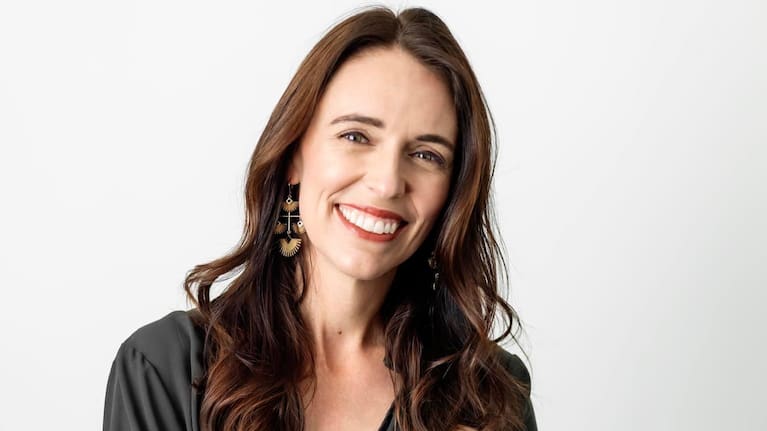
Under the original model, eligible schools could choose a local supplier to make and deliver lunches for a capped cost of $6.77 per meal for primary school children, and $8.62 for secondary school students.
Some schools, like Dargaville High School, opted to prepare meals on-site, employing kitchen staff and receiving $8.29 per student for meal costs.
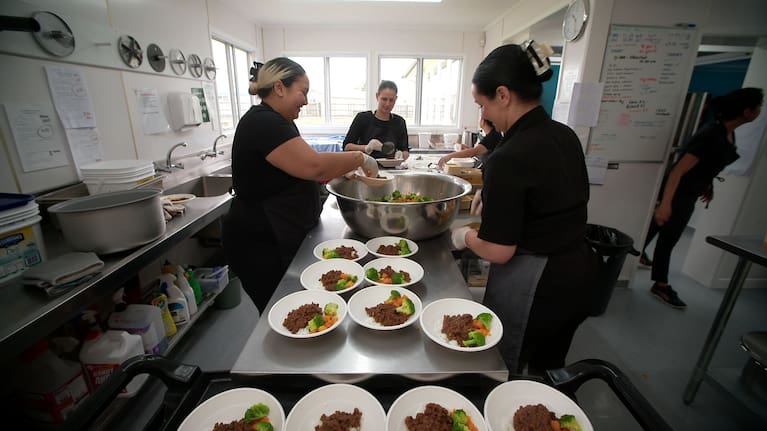
“We have noticed that it has made such a big difference with our students. So they’re much more settled. They’re talking together, they are a lot happier,” says Dargaville High Principal, Mike Houghton.
“It really is important that students get at least one decent, healthy meal a day, and sometimes, this is it.”
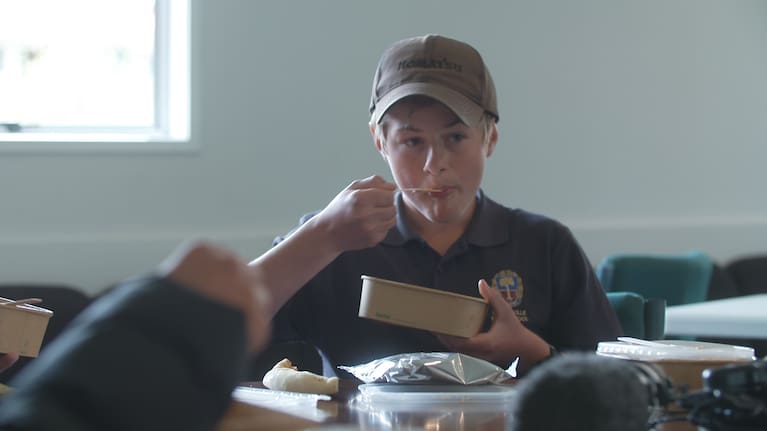
The programme now provides free lunches to 235,000 students across 1014 schools daily. An evaluation by the Ministry of Education noted improvements in students’ mental wellbeing, energy levels, and physical functioning. However, it found “no clear benefits” for attendance rates.
Why are the lunches so much cheaper now?
The driving force behind the changes is cost.
The Coalition Government, emphasising fiscal responsibility and reduced spending, has pointed to the programme’s escalating price tag: $290 million in 2023/2024, projected to rise to $342 million annually in 2025 and 2026.
Associate education minister David Seymour has been critical of the programme’s previous management.
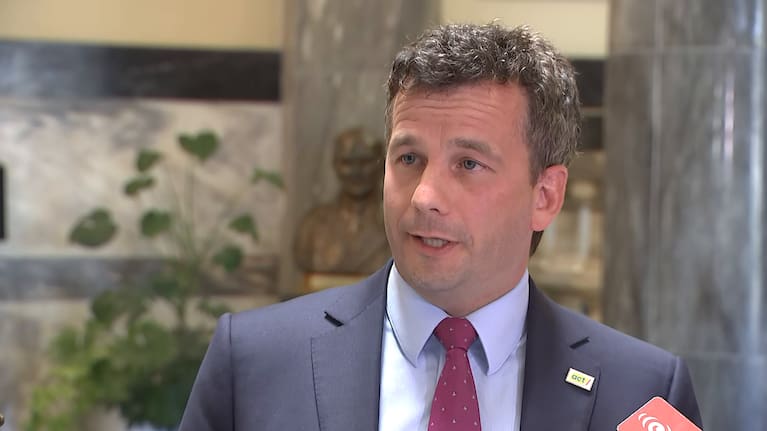
“There’s no question that making the changes we have has been disruptive for people. I admit that. I accept that. However, there was no money in the budget we inherited for the school lunch programme. Next year, we faced a $340 million fiscal cliff,” Seymour said.
Although there were fears the programme might be cut entirely – after Seymour initially called it a “waste of money” – he later backed a cheaper centralised model.
“I still think that parents should pay, but I accept that we’re in a coalition government, and I’ve delivered the policy that our three partners agreed on.”
The revised model, announced last month, banks on the government’s “significant buying power” to reduce costs, according to Seymour. Schools will no longer choose their suppliers. Instead, a centralised system led by the School Lunch Collective – a consortium of companies spearheaded by multinational Compass Group – will handle meal preparation and delivery.
Under the new plan, meals will cost $3 each and must meet Ministry of Education nutritional standards. Schools preparing their own lunches can continue doing so and will receive $4 per meal to account for higher staff costs.
Dargaville High Principal Mike Houghton says meeting the $4 budget will mean tough compromises.
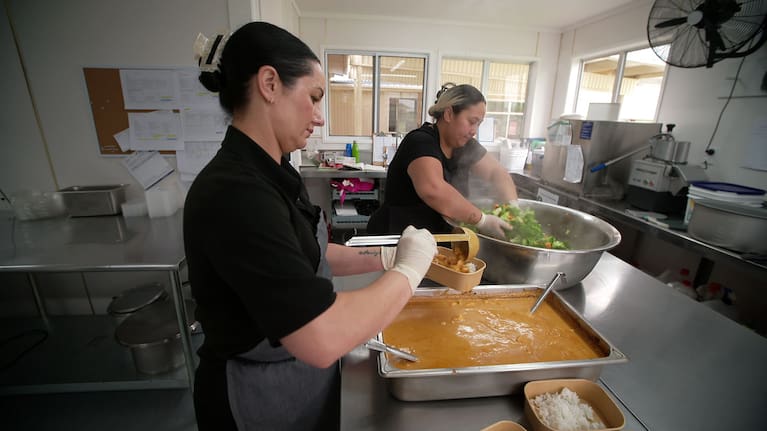
“Meat’s probably the biggest cost. We’re trying to keep portion sizes similar to what they are now, but there could be other trade-offs. And staff, unfortunately, will be an area we have to look at cutting.”
Seymour estimates the revamped system will cut programme costs by half. “The main thing is that we’re saving the taxpayer $170 million a year. You can never lose sight of that. We’re also delivering the same or better quality for the students. Those are the two most important things.”
Whether the quality matches Seymour’s optimism remains to be seen.
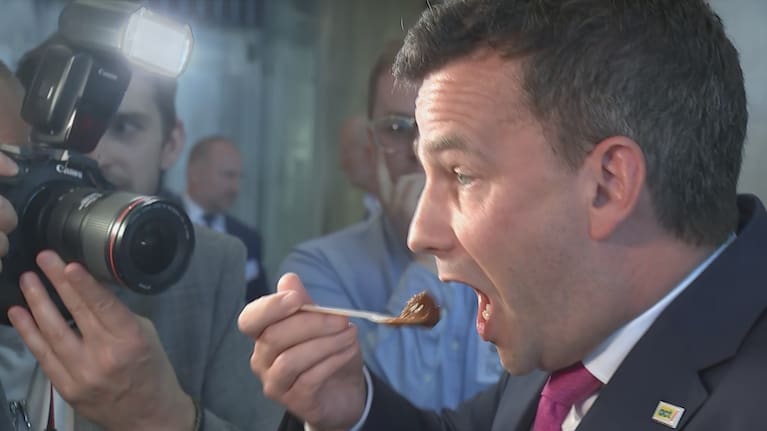
What if the meals are terrible?
Concerns about quality are mounting, especially given the track records of Compass and Libelle, the two largest players in the consortium.
Before the changes, the Ka Ora, Ka Ako programme relied on 156 suppliers. However, since 2021, school complaints about the lunches have led to 75 performance management plans issued by the ministry, and Libelle and Compass accounted for over half of those.
Between July 2022 and mid-2023, Libelle lost more than a third of its contracts, while Compass lost more than a quarter.
Despite these setbacks, both companies say they’ve learned from their mistakes.
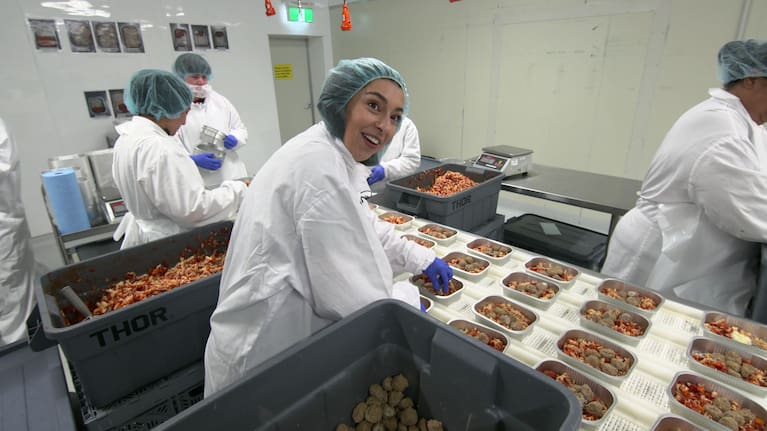
“We will be delivering consistently to schools. We’re very proud of our product,” said a representative from Compass.
Principal Chris Taylor of Naenae College in Lower Hutt isn’t so confident.
“I don’t personally know how you can get enough quality, enough taste, enough variety at $3, given the overheads that must exist for nationwide distribution. I think that’s going to be a crucial failing of the system.”
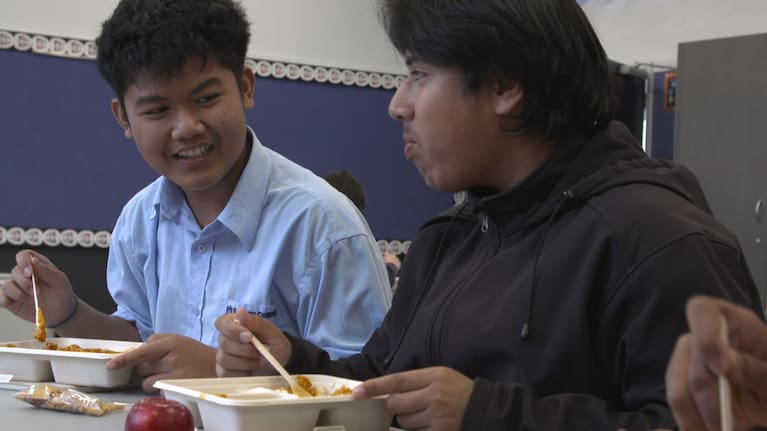
Taylor fears poor-quality meals could lead to increased wastage, undermining the programme’s goals.
When asked about a contingency plan, Seymour admitted there isn’t one.
“I’ll be saying to them publicly, look, you all signed up for this. We all agreed it’s a really important thing for New Zealand children – you’ve got to lift your game. I don’t think we’ll get there, to be honest, but that would be the response.”
InDepth will revisit schools and the Libelle factory next year to assess how the revamped programme is performing.
Watch this story on our home for news, indepth and consumer stories TVNZ+.








